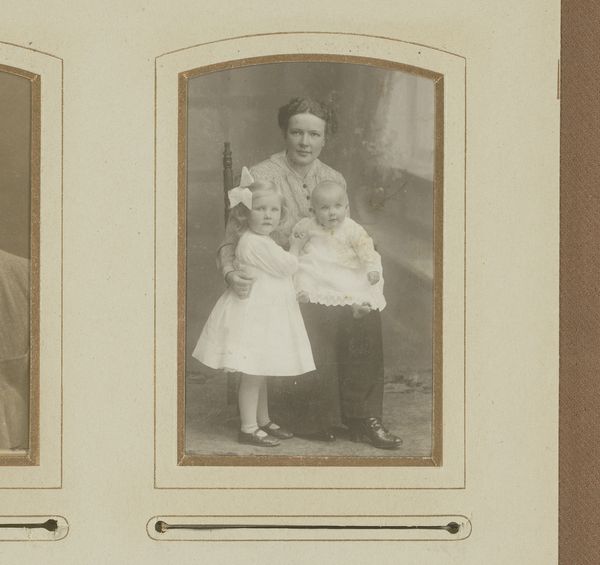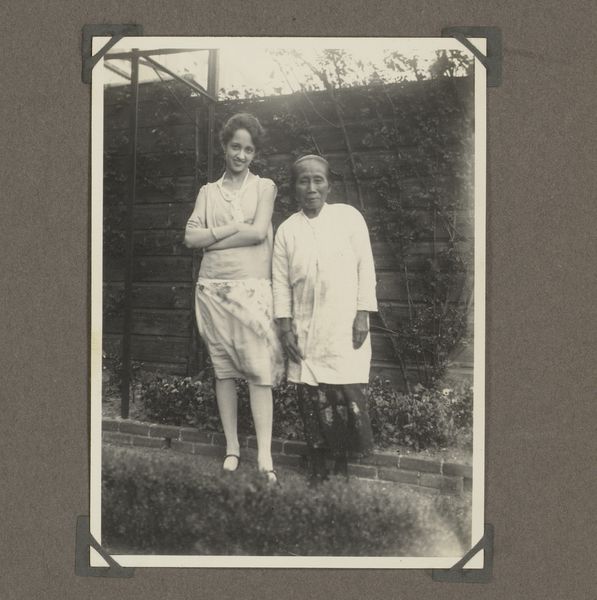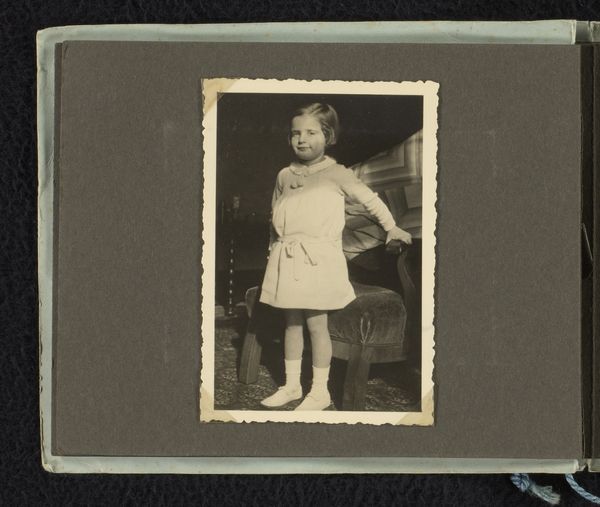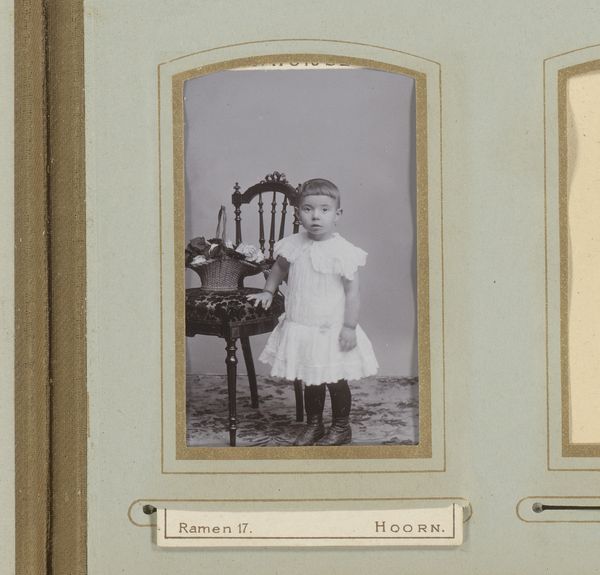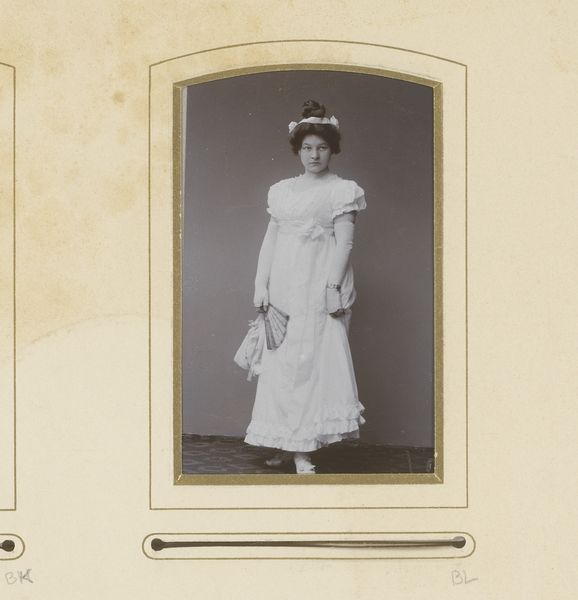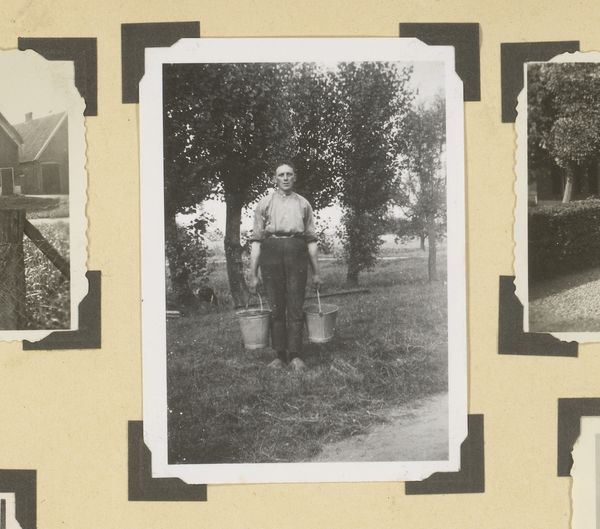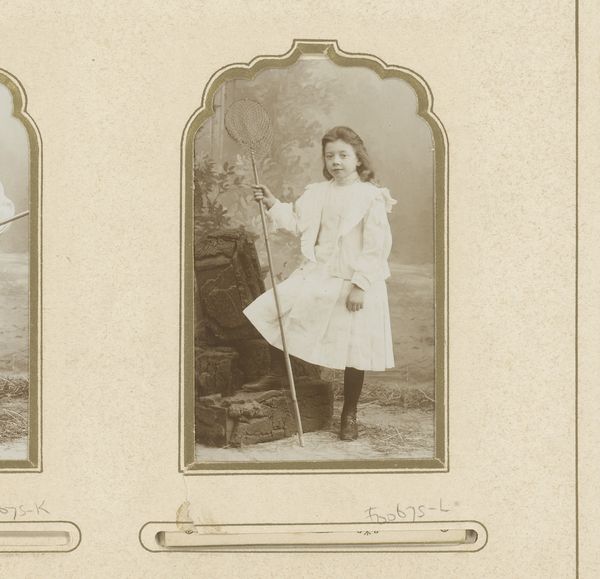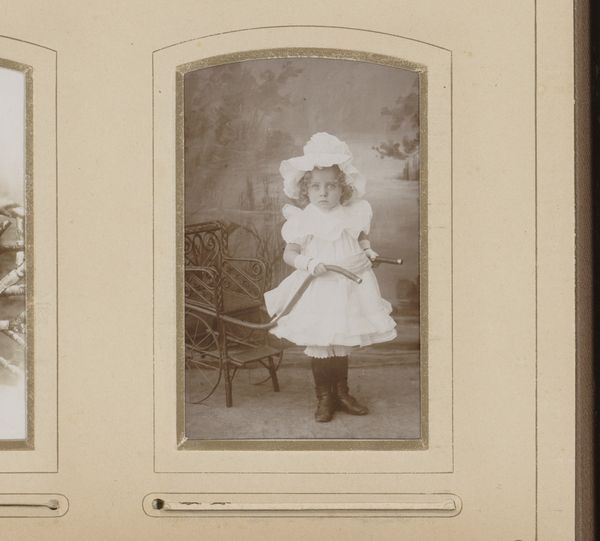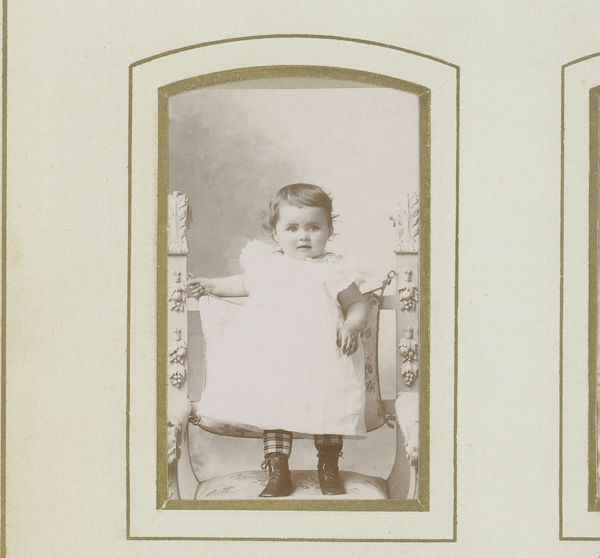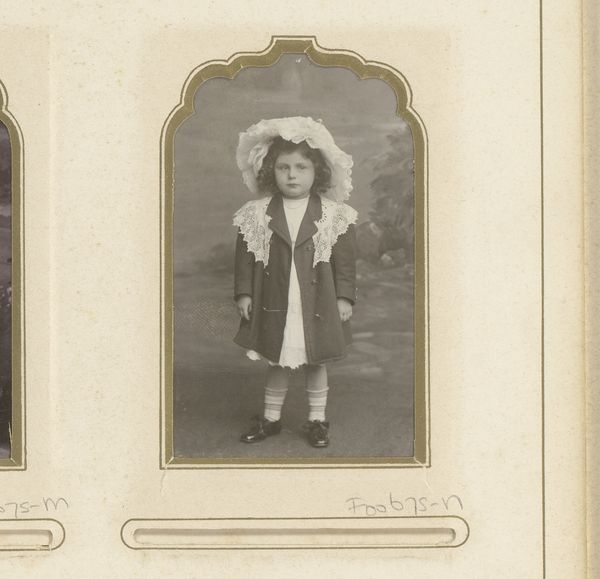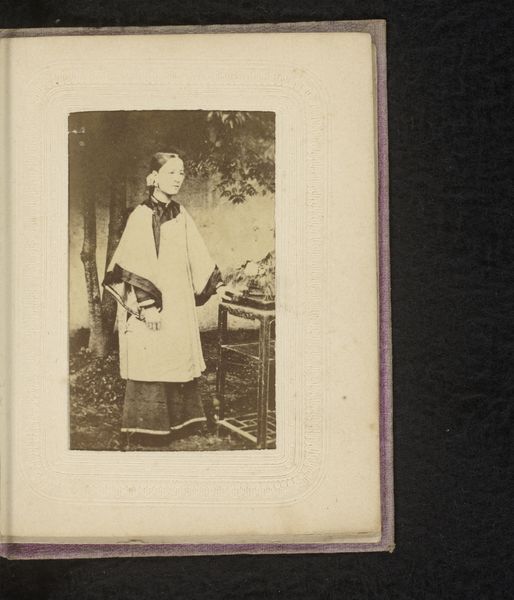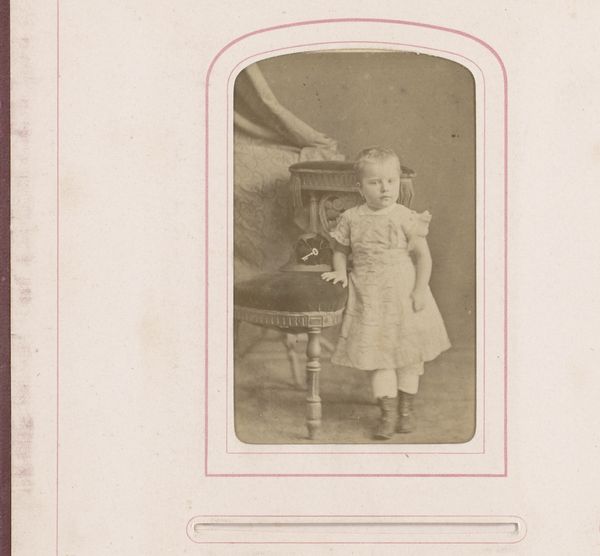
photography
#
portrait
#
garden
#
pictorialism
#
landscape
#
photography
#
genre-painting
Dimensions: height 87 mm, width 53 mm
Copyright: Rijks Museum: Open Domain
Editor: This photograph by Emanuel Meyer, titled "Portret van twee meisjes in witte jurken in een tuin," captures two young girls in what appears to be a garden setting. It seems to date from somewhere between 1903 and 1945. There's an interesting formal quality, almost like a staged portrait. How do you interpret this photograph in terms of its composition and form? Curator: The formal elements are certainly pronounced. Notice the tonal range within the monochrome palette; the artist uses subtle variations to delineate form and space. The backdrop is rendered almost as a flat plane. Let's consider the texture: the crispness of the children's dresses juxtaposed with the softer focus of the background. The lines, especially the circularity of the pram wheels, offer contrast. The light, seemingly diffuse, lacks strong direction. Does this softness, particularly in light and focus, invite speculation about intent? Editor: I see what you mean about the soft focus adding to the feel. It almost blurs out some of the details but emphasizes textures elsewhere. Does the photographic technique itself lend anything to how we view this? Curator: Indubitably. The depth of field is shallow, directing our focus to the subjects and rendering everything else secondary. Notice, too, how Meyer employs vertical and horizontal planes—the girls, the chair, and the ground. Consider their positioning: one stands over the seated sibling. Are we invited to read hierarchy or order through arrangement and clarity, as suggested by a symbolic or structural arrangement? Editor: It’s intriguing how much detail is contained within such a seemingly straightforward portrait, and how those visual elements create structure and possibly even meaning. Curator: Precisely. By focusing solely on the photograph's intrinsic qualities—the tones, textures, lines, light—we decode what otherwise is just a document into one possible vision, one interpretation within the medium of photography itself. The technique directs us beyond mere representation, pushing towards something more carefully arranged, constructed, as we note what resonates across formal grounds, rather than narrative, with a single still point in space and time.
Comments
No comments
Be the first to comment and join the conversation on the ultimate creative platform.
